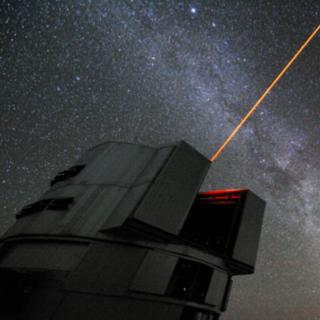Bibcode
Magurno, D.; Sneden, C.; Bono, G.; Braga, V. F.; Mateo, M.; Persson, S. E.; Preston, G.; Thévenin, F.; da Silva, R.; Dall’Ora, M.; Fabrizio, M.; Ferraro, I.; Fiorentino, G.; Iannicola, G.; Inno, L.; Marengo, M.; Marinoni, S.; Marrese, P. M.; Martínez-Vázquez, C. E.; Matsunaga, N.; Monelli, M.; Neeley, J. R.; Nonino, M.; Walker, A. R.
Referencia bibliográfica
The Astrophysical Journal, Volume 881, Issue 2, article id. 104, 16 pp. (2019).
Fecha de publicación:
8
2019
Revista
Número de citas
25
Número de citas referidas
25
Descripción
We present a detailed spectroscopic analysis of RR Lyrae (RRL) variables
in the globular cluster NGC 5139 (ω Cen). We collected optical
(4580–5330 Å), high-resolution (R ∼ 34,000), high
signal-to-noise ratio (∼200) spectra for 113 RRLs with the
multifiber spectrograph M2FS at the Magellan/Clay Telescope at Las
Campanas Observatory. We also analyzed high-resolution (R ∼ 26,000)
spectra for 122 RRLs collected with FLAMES/GIRAFFE at the Very Large
Telescope, available in the ESO archive. The current sample doubles the
literature abundances of cluster and field RRLs in the Milky Way based
on high-resolution spectra. Equivalent-width measurements were used to
estimate atmospheric parameters, iron, and abundance ratios for α
(Mg, Ca, Ti), iron peak (Sc, Cr, Ni, Zn), and s-process (Y) elements. We
confirm that ω Cen is a complex cluster, characterized by a large
spread in the iron content: ‑2.58 ≤ [Fe/H] ≤ ‑0.85.
We estimated the average cluster abundance as < [{Fe}/{{H}}]>
=-1.80+/- 0.03, with σ = 0.33 dex. Our findings also suggest that
two different RRL populations coexist in the cluster. The former is more
metal-poor ([Fe/H] ≲ ‑ 1.5), with almost solar abundance of
Y. The latter is less numerous, more metal-rich, and yttrium enhanced
([Y/Fe] ≳ 0.4). This peculiar bimodal enrichment only shows up in
the s-process element, and it is not observed among lighter elements,
whose [X/Fe] ratios are typical for Galactic globular clusters.
This paper includes data gathered with the 6.5 m Magellan Telescopes
located at Las Campanas Observatory, Chile.
Proyectos relacionados

Evolución Galáctica en el Grupo Local
La formación y evolución de galaxias es un problema fundamental en Astrofísica. Su estudio requiere “viajar atrás en el tiempo”, para lo cual hay dos enfoques complementarios. El mas extendido consiste en analizar las propiedades de las galaxias a diferentes distancias cosmológicas. Nuestro equipo se concentra en el otro enfoque, denominado
Emma
Fernández Alvar